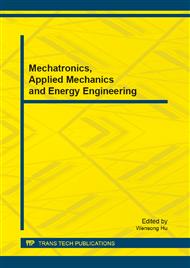p.115
p.121
p.128
p.134
p.140
p.144
p.150
p.157
p.163
Application of a Tensioner on a Chain Drives Multibody Model
Abstract:
The dynamics of chain drives is a complex issue due to the polygonal effect and the multiple successive impacts that take place. The combined effect of these phenomena leads to discontinuities in the systems velocities giving rise to transversal and longitudinal vibrations on the chain spans. To investigate the pretension effect on the drive dynamics, a tensioner is applied to a generalized chain drives multibody model developed and implemented in a computational code by the authors. In this model, the clearance revolute joints formulation is used to handle the dry contact between all drive components. The pretension changes the characteristics of the contact pairs by enforcing a continuous contact with only a small number of contact losses. When no pretension is used, the contact is characterized by a sequence of short duration contacts. The strands of the pretensioned chain vibrate with higher frequency but smaller amplitude in comparison to the non-pretensioned system.
Info:
Periodical:
Pages:
140-143
Citation:
Online since:
September 2013
Authors:
Keywords:
Price:
Сopyright:
© 2013 Trans Tech Publications Ltd. All Rights Reserved
Share:
Citation:


